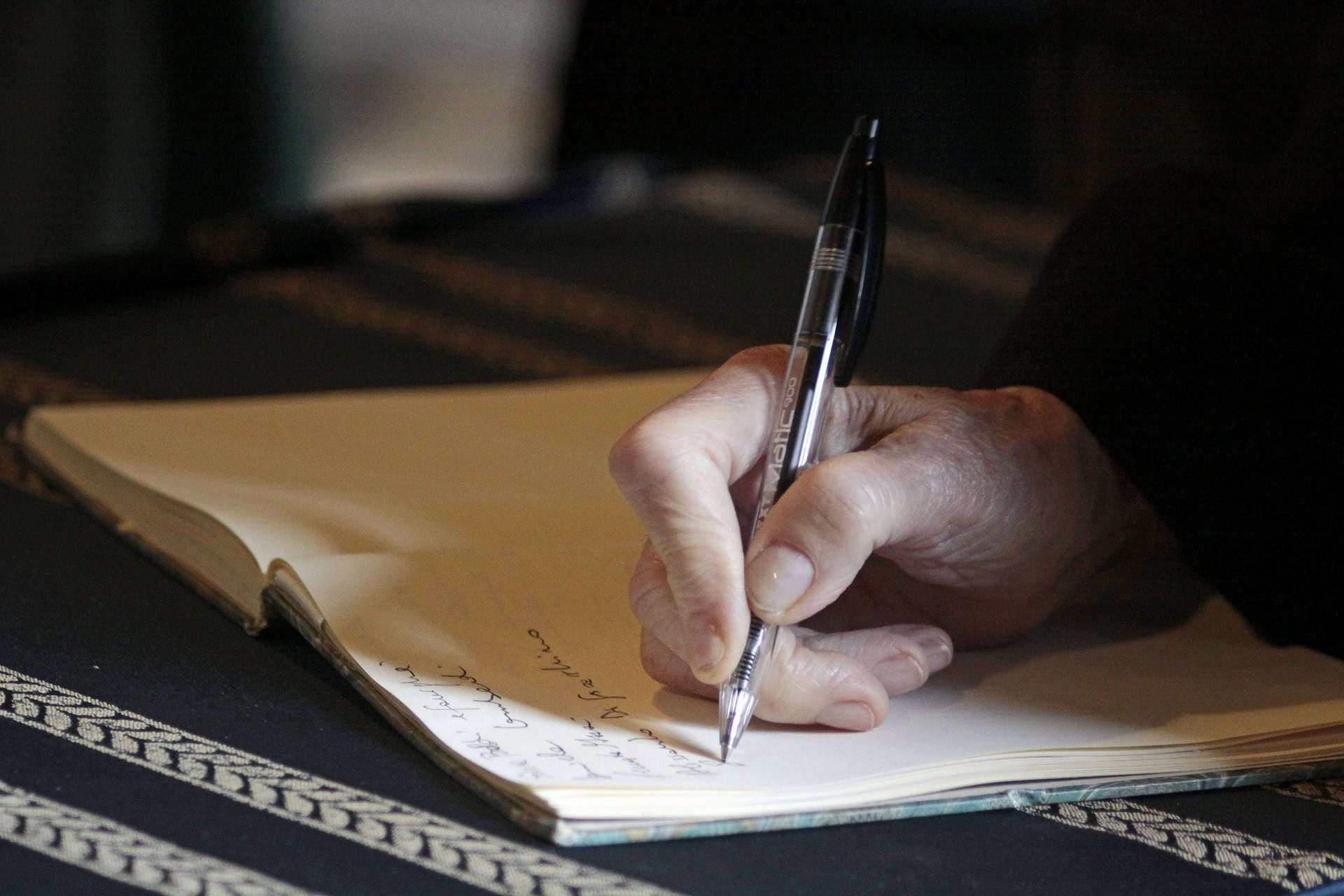21 Ingenious Ways to Create Narrative Tension in Fiction Writing
Unlock the secrets to gripping fiction with 21 proven techniques for creating narrative tension. From pacing to hooks, we’ve got your guide to storytelling mastery.
Introduction
Narrative tension is the heartbeat of any compelling story. It’s what keeps readers glued to the page, eager to discover what happens next. In this comprehensive guide, we’ll delve into 21 ingenious ways to infuse your fiction writing with tension. Whether you’re a novice or a seasoned writer, these techniques will elevate your storytelling to new heights.
Hooks and Seeds
Hooks grab your reader’s attention immediately, while seeds are subtle hints or questions planted early on.
- Example: “1984” starts with the haunting line “It was a bright cold day in April, and the clocks were striking thirteen,” immediately hooking the reader.
Questions to Consider:
- What is your opening hook?
- Have you planted seeds that will pay off later?
Get “hooked” on the finer points of narrative planting. Dig deeper into hooks and seeds here.
The Art of Pacing
Pacing is the rhythm of your story, crucial for building tension.
Too fast, and you risk overwhelming the reader; too slow, and they might lose interest.
- Example: In “Jurassic Park,” quiet moments of scientific discussion are interspersed with intense scenes of dinosaur action, keeping the reader engaged.
Questions to Consider:
- Are there moments where your pacing feels off?
- How can you adjust sentence structure to improve pacing?
Don’t miss a beat! Learn how to set the perfect pace for your story’s tension.
Crafting Suspense
Suspense is making the reader wait, but not for too long.
Create questions in the reader’s mind and delay the answers.
- Example: In “The Girl with the Dragon Tattoo,” a series of mysteries and questions are slowly answered, keeping the reader hooked.
Questions to Consider:
- What questions are you posing to the reader?
- Are you answering them at the right time?
On the edge of your seat yet? Learn how to keep your readers there with crafted suspense.
Flashbacks and Non-Linear Storytelling
Using flashbacks or a non-linear timeline can create tension by withholding key information.
This narrative technique keeps readers eagerly flipping pages, as they try to piece together the story’s events and their significance.
- Example: “Pulp Fiction” employs a non-linear timeline that keeps the audience guessing.
Notes:
- Use flashbacks sparingly.
- Ensure they serve a purpose in the story.
Time-travel through narrative! Discover how flashbacks can make your story anything but straightforward.
The Role of Antagonists
A strong antagonist can elevate your story’s tension by challenging the protagonist and complicating their goals.
- Example: In “The Dark Knight,” the Joker constantly challenges Batman, making the story incredibly tense.
Questions to Consider:
- Is your antagonist fully developed?
- How do they add tension to the story?
The Unreliable Narrator
An unreliable narrator can add layers of tension by making the reader question what’s true.
- Example: In “Fight Club,” the unreliable narrator completely alters our perception of the story.
Questions to Consider:
- Is your narrator trustworthy?
- How can you use this to create tension?
The Cliffhanger’s Cousin: The Page-Turner
Page-turners are mini-cliffhangers that make the reader want to start the next chapter immediately.
- Example: “The Hunger Games” uses page-turners effectively at the end of each chapter.
Questions to Consider:
- Where can you insert page-turners in your story?
- How can they propel the narrative?
The Element of Surprise
Surprises can jolt your reader and renew interest in the story. They should be unexpected yet inevitable.
- Example: In “Gone Girl,” the mid-story twist changes everything we thought we knew about the characters.
Notes:
- Foreshadow the surprise subtly.
- Make sure the surprise serves the story.
Emotional Stakes
Readers need to care about what happens to the characters. Emotional stakes can heighten tension considerably.
- Example: In “The Fault in Our Stars,” the emotional stakes are life and death, making the story incredibly tense.
Questions to Consider:
- What do your characters stand to gain or lose?
- How can you make readers emotionally invested?
The Role of Conflict
Conflict is the engine that drives narrative tension. Without it, your story will lack urgency and stakes.
- Example: In “Harry Potter,” the conflict between Harry and Voldemort serves as the backbone of the series, creating tension in every book.
Questions to Consider:
- What is the central conflict in your story?
- How does this conflict escalate over time?
Moral Dilemmas
Introducing moral dilemmas can make your characters more relatable and their choices more agonizing, which adds tension.
- Example: In “Breaking Bad,” Walter White’s moral dilemmas about crime and family create constant tension.
Questions to Consider:
- What moral dilemmas fit your characters and themes?
- How can these dilemmas add layers to your story?
Time Constraints and Deadlines
Adding a ticking clock to your story can heighten tension exponentially. Time constraints create urgency and make every action significant.
- Example: In “The Da Vinci Code,” the characters are racing against time to solve the mystery, adding an extra layer of tension.
Questions to Consider:
- Could your story benefit from a ticking clock?
- How can you introduce time constraints organically?
The Power of Setting
The setting can also be a character in your story, adding another layer of tension.
- Example: The Overlook Hotel in “The Shining” is a setting filled with tension.
Notes:
- Use the setting to reflect the story’s mood.
- Make the setting work for your story, not against it.
Subplots and Red Herrings
Subplots can add complexity, while red herrings can mislead the reader, both adding layers of tension.
- Example: In “The Da Vinci Code,” subplots and red herrings keep the reader engaged and guessing.
Notes:
- Make sure subplots are relevant.
- Use red herrings judiciously.
Payoffs: The Reward System
Payoffs are where you deliver on the promises made by your hooks and seeds. They are the answers to the questions you’ve posed, the resolutions to conflicts you’ve built.
- Example: In “The Sixth Sense,” the payoff comes in the form of a twist that redefines the entire story.
Questions to Consider:
- Are your payoffs satisfying?
- Do they answer the questions posed by your hooks and seeds?
Techniques in Description and Dialogue
Even the way characters talk and settings are described can contribute to tension. Use descriptive language to set the mood and tone. In dialogue, employ subtext and conflict to reveal character dynamics and heighten tension.
- Example: In “To Kill a Mockingbird,” the setting of the racially charged American South adds another layer of tension to the story.
Questions to Consider:
- Are your descriptions adding to the story’s tension?
- Does your dialogue reveal character dynamics?
The Element of Mystery
A well-placed mystery can make your reader eager to find out more, thereby increasing tension.
- Example: In “Sherlock Holmes” stories, the mystery is often what drives the tension from start to finish.
Questions to Consider:
- What mysteries can you introduce to hook the reader?
- How will you resolve them for maximum impact?
The Use of Foreshadowing
Foreshadowing is a technique where you give hints or clues about what will happen later in the story. It creates anticipation and makes the payoff even more satisfying.
- Example: In “Romeo and Juliet,” the characters often speak of fate and destiny, foreshadowing the tragic end.
Questions to Consider:
- What elements can you foreshadow for a satisfying payoff?
- How subtle or obvious should your foreshadowing be?
Unpredictable Outcomes
The less predictable your story, the more tension you’ll create. Readers love to be surprised.
- Example: In “Gone Girl,” the story takes several unexpected turns that keep the reader on the edge of their seat.
Questions to Consider:
- Are there elements in your story that are too predictable?
- How can you surprise your reader?
The Importance of Theme
A strong theme can add another layer of tension, especially if it’s a theme that resonates with the reader.
- Example: The theme of social inequality in “The Great Gatsby” adds tension and depth.
Questions to Consider:
- What is the overarching theme of your story?
- How can it add tension?
The Use of Symbols and Motifs
Symbols and motifs can serve as recurring elements that add depth and tension when they reappear.
- Example: The green light in “The Great Gatsby” serves as a recurring symbol that adds to the story’s tension.
Questions to Consider:
- What symbols or motifs could you incorporate?
- How can they add layers of meaning and tension?
21-Point Checklist for Creating Narrative Tension in Fiction Writing
- Start with a compelling hook to grab your reader’s attention.
- Plant seeds or subtle hints early in the story to create anticipation.
- Master the art of pacing to maintain reader interest.
- Build suspense by posing questions and delaying their answers.
- Introduce a strong antagonist to challenge the protagonist.
- Use cliffhangers effectively to keep the reader engaged.
- Employ the element of surprise to jolt the reader.
- Raise the emotional stakes to make the reader care about the outcome.
- Create conflict between characters to add another layer of tension.
- Incorporate moral dilemmas to make choices more agonizing.
- Use time constraints or deadlines to create urgency.
- Add subplots to make the story more complex.
- Utilize red herrings to mislead the reader and add unpredictability.
- Deliver satisfying payoffs for the hooks and seeds you’ve planted.
- Use descriptive language to set the mood and tone.
- Make dialogue meaningful with layers of subtext and conflict.
- Introduce mysteries to hook the reader and make them eager for answers.
- Use foreshadowing to hint at future events and make payoffs more satisfying.
- Make the story’s outcome unpredictable to keep the reader guessing.
- Incorporate a strong theme to add another layer of tension.
- Use symbols and motifs as recurring elements to add depth and tension.
This checklist is designed to guide you through the process of creating a story filled with narrative tension. Each point corresponds to a key technique or element that can elevate your fiction writing. Feel free to use this as a roadmap as you craft your gripping tale.
FAQs
How can conflict be used to create tension?
Conflict creates urgency and stakes, making the reader invested in the outcome.
What role do surprises play in narrative tension?
Surprises can jolt the reader, renewing interest and adding unpredictability to the story.
How do emotional stakes contribute to tension?
Emotional stakes make the reader care about the characters, thus heightening tension.
Can flashbacks add to narrative tension?
Yes, flashbacks can withhold key information, making the reader eager to fill in the gaps.
How can an unreliable narrator add tension?
An unreliable narrator makes the reader question what’s true, adding layers of tension.
What are subplots and red herrings?
Subplots add complexity, while red herrings mislead the reader, both adding layers of tension.
What is a page-turner?
A page-turner is a mini-cliffhanger that encourages the reader to start the next chapter immediately.
How can setting contribute to tension?
The setting can reflect the story’s mood and even act as an additional character, adding tension.
How do I keep my reader emotionally invested?
By creating relatable characters and raising the emotional stakes, you can keep the reader invested.
What should I keep in mind for the ending?
The ending should resolve the main conflict and deliver on the promises made throughout the story.
How can I use dialogue to create tension?
Dialogue can be used to reveal character dynamics, subtext, and conflict, thus creating tension.
What is the difference between pacing and suspense?
Pacing is the rhythm of the story, while suspense involves making the reader wait for key information.
How can I use description to add tension?
Descriptive language can set the mood and tone, contributing to the overall tension.
What are the elements of a good hook?
A good hook grabs attention, poses a question, or introduces a conflict right at the start.
How can I plant seeds effectively?
Seeds should be subtle hints or questions that prepare the reader for future events.
What makes a payoff satisfying?
A satisfying payoff delivers on the promises made by hooks and seeds, resolving questions and conflicts.
How can I use cliffhangers effectively?
Cliffhangers should be used at the end of chapters to keep the reader engaged and eager to continue.
What is the role of foreshadowing?
Foreshadowing subtly hints at future events, creating anticipation and tension.
How can I balance action and reflection?
Use shorter sentences for action scenes and longer ones for moments of reflection to control pacing.
What is the importance of character dynamics?
Character dynamics reveal relationships and conflicts, adding another layer of tension.
How can I make my story unpredictable?
By introducing surprises, twists, and red herrings, you can make your story less predictable and more engaging.
References
- McKee, R. (1997). “Story: Substance, Structure, Style, and the Principles of Screenwriting.”
- King, S. (2000). “On Writing: A Memoir of the Craft.”
- Vogler, C. (2007). “The Writer’s Journey: Mythic Structure for Writers.”
- Field, S. (2005). “Screenplay: The Foundations of Screenwriting.”
- Truby, J. (2008). “The Anatomy of Story: 22 Steps to Becoming a Master Storyteller.”
- Goldman, W. (1983). “Adventures in the Screen Trade.”
- Zinsser, W. (2006). “On Writing Well: The Classic Guide to Writing Nonfiction.”
- Strunk, W., & White, E.B. (1999). “The Elements of Style.”
Keywords
Narrative Tension, Fiction Writing, Pacing, Suspense, Hooks, Seeds, Payoffs, Description, Dialogue






